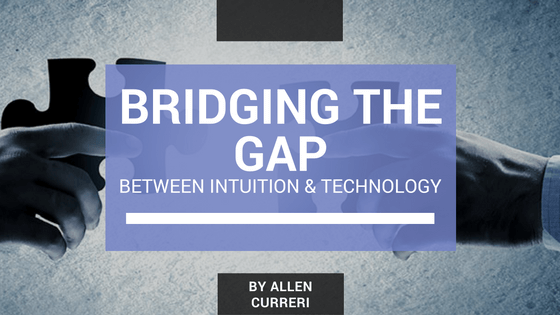Health has always been as much an art as a science. Since the beginnings of medicine, intuition has played a key role in a physician’s ability to diagnose and treat their patients. Now we are facing a shift in the very fundamentals of the practice. Intuition has begun taking a back seat to technologies like clinical decision support systems (CDSSs), automated processes designed to help diagnose and determine treatment without the subjective experience of the doctor. Modern physicians and healthcare providers must find a delicate balance between intuition and technology in order to create the best patient outcomes.
CDSSs are defined as electronic systems “designed to help healthcare professionals to make clinical decisions” (Musen, Middleton, & Greenes, 2014). CDSS use became the law of the land in 2009 with the passage of the Health Information Technology for Economic and Clinical Health Act. As of last year (2015), all healthcare providers were required to show “meaningful use” of CDSS to receive full Medicare reimbursements in 2016 (CDC, 2016). CDSSs are just one tool in a physician’s diagnostic set, but they are a crucial one that must, by law, be incorporated into the diagnostic process.
Experienced physicians use a variety of cognitive processes and decision making strategies to reliably make correct diagnoses and treatment decisions. As they gain more experience, physicians tend to rely more on their experience and intuition, and less on the unique factors involved in treating the individual patient.
There is a generational divide between doctors who rely on their instinct versus doctors who rely on CDSSs. Several participants in my previous qualitative study, all of whom were 33 years old or younger, were firmly against the use of instinct when treating patients. One participant hit it on the nose when they said, “You’d have to be an old school doctor to trust intuition. Technology today is so accurate that one doesn’t need to risk diagnosing incorrectly.” Another (participant 19F) echoed this sentiment by saying, “With all of the technology and training we have today, one wouldn’t have to rely on instinct to diagnose. Why would you want to risk it?” Participant 4F said, “I’ve never used my instinct to treat anyone.”
In contrast, participants over the age of 33 still saw value in intuition in treating patients. “There’s a lot of science in medicine, but it is primarily still more of an art than science…When it comes down to it, it’s still a patient, a person, and as we often say, patients don’t read the textbooks” (Participant 9F). Participant 11M explained, “I believe that an ER physician’s brain is ruling out other causes, diagnoses, etc., but this is happening in the background of our minds. It’s not even cognitive to me. It’s just years of experience and seeing what I’ve seen.”
This generational gap in the importance of instinct is supported by the theoretical work of Dreyfus and Dreyfus (2005), who developed a five-stage model of skill acquisition in which individuals progress from a novice level to the level of expertise. At the novice level, individuals rely heavily on abstract concepts and discrete pieces of information, which they often learn from instructors. As people progress through the five stages of skill acquisition, the role of abstract concepts (such as those embodied by CDSSs) becomes less and less important, giving way to experience and situational responses (such as instinct). Speaking of physicians, Dreyfus and Dreyfus (2005) argued, “medical expertise in particular, cannot be captured in rule-based expert systems, since expertise is based on the making of immediate… situational responses” (779).
Dreyfus and Dreyfus’ research indicates that reliability among experts is more complex than rule-based decision making models suggest, and it offers clues as to why younger doctors rely heavily on CDSSs while more experienced doctors rely more on their instincts.
Through my research, I have learned that mindfulness can offer a bridge between intuition and CDSS use. Mindfulness is defined as “the capacity to be aware of one’s internal condition and external situation as fully and as consciously as possible” (Coget & Keller, 2010: 69) and is distinct from intuition and intuitive decision making. Westcott (1968) defined intuitive decision making as the process of “reaching a conclusion on the basis of less explicit information than is ordinarily required to reach that conclusion” (71). In comparison, mindful physicians make decisions on the basis of both explicit and non-explicit information as best benefits the unique situation.
One can practice mindfulness while simultaneously exercising intuitive reasoning; in fact, the two practices can work well together. Physicians who remain mindful during patient care may collect more context-specific information, which can, in turn, allow them to better decide whether to follow their intuition or to seek further confirmation before proceeding. If a physician relies exclusively on their instinct or CDSSs, they may miss information that a more mindful physician might observe.
It is important to not confuse intuition for pattern recognition. Pattern recognition is involved in clinical decision making, but it is more related to mindfulness and must be paired with mindfulness to achieve the best results. Mindful physicians may be more likely to recognize patterns by assessing patients’ clinical contexts, and pattern recognition may aid them in the decision making process. However, mindful physicians may also be more likely to recognize ways in which individual situations are unique, enabling them to avoid biased, inaccurate pattern recognition, which often leads to clinical decision mistakes (Shortliffe et al., 1979). Pattern recognition becomes confused with intuition when physicians rely heavily on pattern recognition without the use of mindfulness.
CDSSs are limited in their diagnostic capabilities to pattern recognition, which makes the physicians who rely exclusively on them vulnerable to changes and differences in situations which the CDSS algorithms may not factor in. Butler and Gray (2006) explained, “While software that is easy to use increases users’ efficiency, it also increases their vulnerability to change or failure because it makes task execution more automatic.” Physicians who rely exclusively on routine- and pattern-based CDSSs or exclusively on their intuition can run afoul of these issues, to the detriment of their patients’ outcomes.
Merging mindfulness with CDSS technologies and honed intuition can create an optimal balance that improves physician performance and patient outcome. Mindfulness can also bridge the gap between generations of doctors, as it is equally as effective with heavy CDSS use as it is with a strong reliance on instinct. Mindfulness brings doctors out of their heads and out of their CDSSs and into the room with their patient so that their patient can receive optimal care and an optimal outcome.
References
CDC. (2016, May 26). “Meaningful Use.” Retrieved October 07, 2016
Westcott, M. (1968). Psychology of intuition. A historical, theoretical, and empirical inquiry: New York: Holt, Rinehart & Winston.


